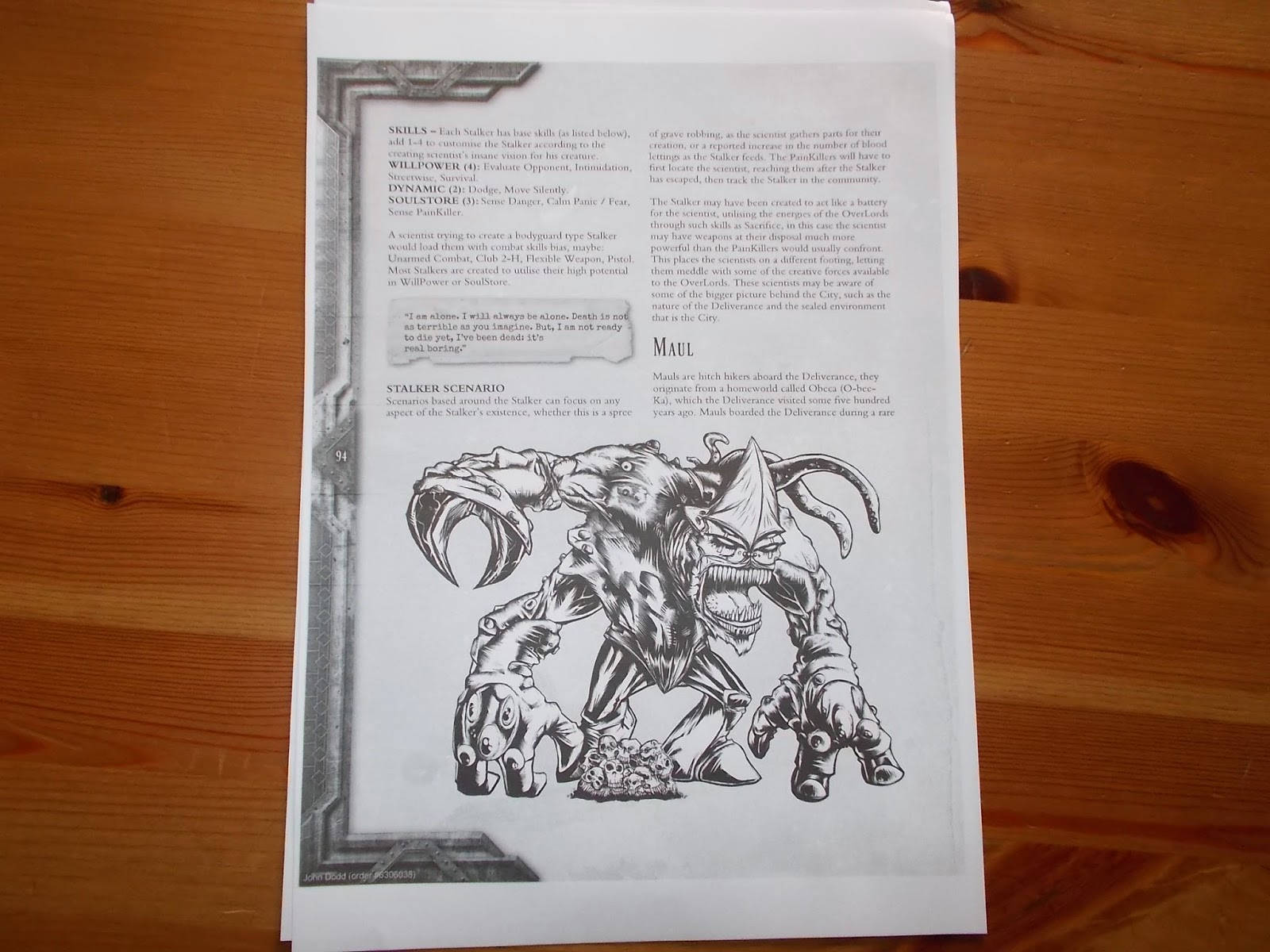I always find it interesting when a new game comes out, the first
question that invariably has to be asked is whether or not it’s something new,
or if the creator has just come up with the latest “Greatest” clone of another
game that’s already been out there.
In the matter of Painkiller, I can say without doubt that this hasn’t been
done before...
The characters in the game take the form of an engineered race known as
the Painkillers, and the game is set upon the Deliverance, a colossal space
ship on route to the centre of the galaxy, there to engage with the god that
created the race and convince it to release those living within the galaxy from
their servitude.
Epic setting is not something this game has a problem with...
However, that is the whole arc of the plot, something that is not
likely to be reached within the players lifespan. It should be pointed out at this point that
Painkiller is not a game for those who have little to no experience of
roleplaying games in general, and it points this out early on in the game. There is no attempt to cover the use of
language that only gamers will understand and there is no apology for it
either.
The characters take the form of one of several different types of
Painkiller, all of which only have one thing in common.
They were once something else...
As the Deliverance moves through space, it takes specimens from nearby
planets and alters them to become Painkillers, always wiping their memories of
their previous lives, but as time goes on, the original DNA of the creature they
were may begin to reassert itself upon the nature of the Painkiller.
There are five different types of character,
from the Metalheads, who have the ability to ingest and assimilate metal into
their bodies, to the Fleshmelds that are able to mould their physical form into
what they need at the time, rather than having a single, static form. None of them are presented as similar in
nature to humans in anyway and the game encourages original thought when it
comes to putting the character together.
And by that I mean that if you need all your character options laid out
for you so you can pick and choose everything you want, you’re not going to
like this...
The system is innovative, standard D10 base with the average skill roll
being Stat + Skill against a target difficulty. Skills can be used as automatic
successes to streamline things and make the lower level skill checks
unnecessary, but there is a separate mechanism to the skill check system
whereby rolling the same number on the dice allows you to take another success
(For example, if you roll two 8’s on the dice, you would get the two successes
for the 8’s and a bonus success for the matching number), with the roll of four
or five of a kind allowing for far greater success in the test.
Where Painkiller is strongest however, is in the background and the
utilisation of that background. There is
not an exhaustive list to everything that’s out there, and it would be
impossible to do so given the scale of the area being played upon, but there
are a number of areas demonstrated in the book that give both GM’s and Players
an immediate handle on what they’re like and also how they could put a scenario
into that area. There is a sample
scenario included in the book that will run a new GM through a detailed look at
the world and how things work whilst giving the players time to look around and
get themselves familiar with the world they’re now in.
There are a lot of Meta-references in the book to things that have nothing
to do with the game, and it’s clear from the beginning of the book that they’re
in there because it’s easier to throw in that reference and have people get it
immediately rather than spending ten minutes trying to explain that you’re
talking to Frank Drebin...
It’s not for beginners, I’ve said that before, and I’ll say it again
now, because it’s really important to point out that both GM and players will
need to have some basic grounding in how to play RPG’s in general. Like a
number of classic RPG’s, it gives you a world and lets you have at it.
Available in PDF from Drivethru, it’s worth the asking price for the
background and ideas within it alone, but when you take into account the innovative
system and the number of hints (both veiled and oblique) levelled at where this
could be going, it’s a bold entry from a small publishing house and I’ll be
interested to see where they go next with it.




